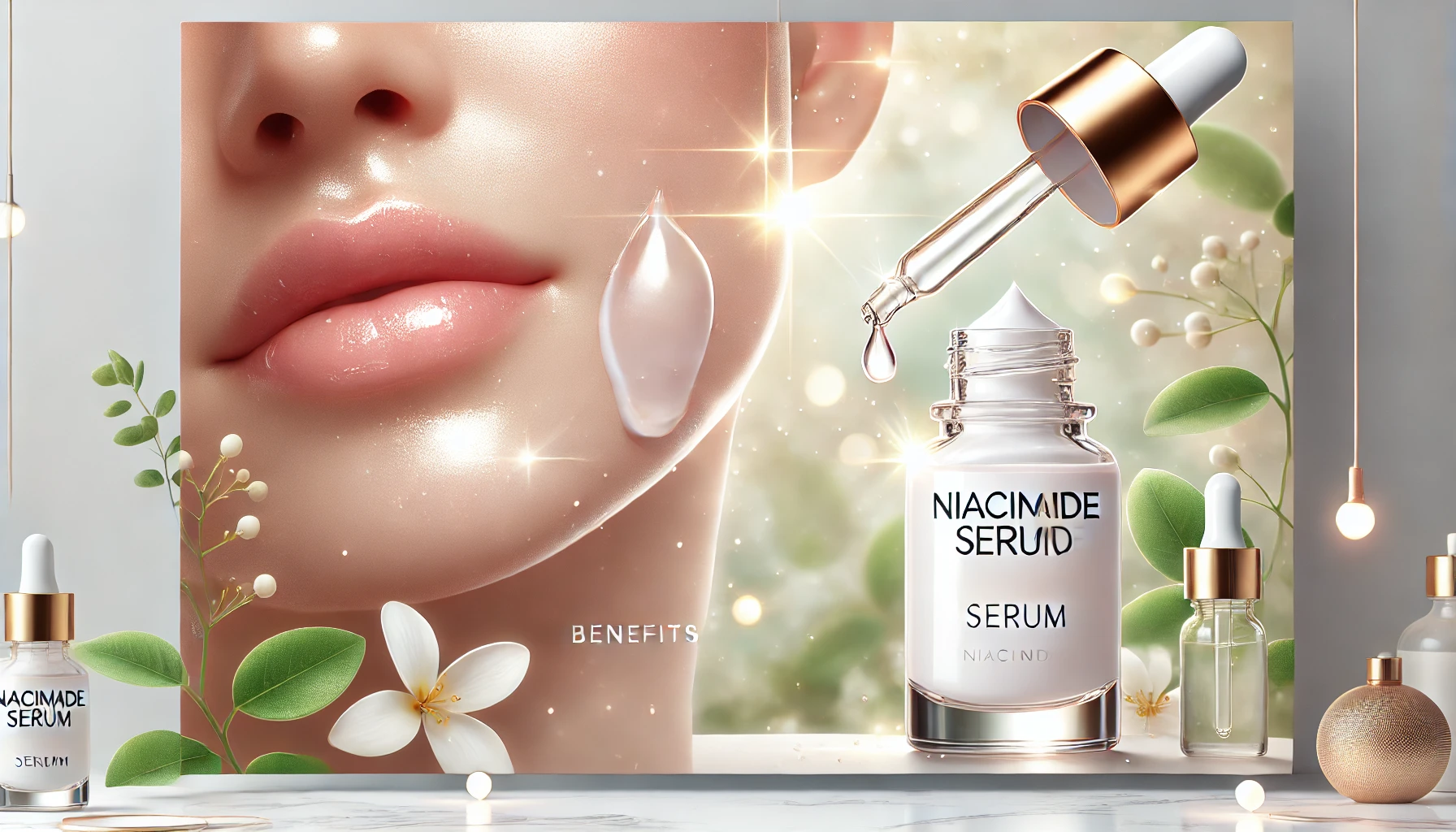Unveiling the Skin Benefits of Niacinamide: From Brightening to Hyperpigmentation
What Is Niacinamide, and Why Does It Benefit the Skin?
Niacinamide, a form of vitamin B3, has become one of the most celebrated ingredients in skincare, praised for its numerous benefits. Known for improving skin texture, brightening the complexion, and targeting acne, niacinamide offers a versatile solution for various skin issues. From addressing acne to reducing hyperpigmentation and supporting skin health, the benefits of niacinamide for skin make it a valuable addition to your skincare routine. In this article, we’ll explore why this ingredient deserves a spot in your regimen and how to use it effectively.
Understanding the Benefits of Niacinamide for Skin
1. Brightening and Even Skin Tone
One of the top benefits of niacinamide is its ability to brighten and even out the skin tone. This ingredient reduces the appearance of dark spots and hyperpigmentation, helping you achieve a radiant complexion. Niacinamide is effective for hyperpigmentation because it slows down melanin transfer within skin cells, helping lighten areas of discoloration over time.
2. Strengthening the Skin Barrier
Niacinamide strengthens the skin’s barrier by increasing the production of ceramides, which are essential for maintaining moisture. A robust skin barrier protects against pollutants, bacteria, and other irritants, which is especially beneficial for those with sensitive or acne-prone skin. Using niacinamide for oily skin can also help balance sebum production, making it ideal for those struggling with excess shine and clogged pores.
3. Niacinamide for Acne-Prone Skin
When it comes to acne, niacinamide stands out as a beneficial ingredient. This powerhouse not only reduces inflammation but also regulates oil production. By calming inflamed skin and balancing sebum, niacinamide can reduce acne and prevent future breakouts, making it a must-have for those with oily or combination skin types.
Did you know? Studies have shown that niacinamide can be as effective as antibiotics like clindamycin in reducing acne, making it an excellent choice for long-term skincare routines.
Niacinamide Serum Benefits: Why a Serum is Effective
Niacinamide serums offer a concentrated dose of this beneficial ingredient, making it easier for the skin to absorb and reap the full benefits. A serum is often more potent than other skincare products, which is why niacinamide serum benefits are often more noticeable in addressing acne, evening skin tone, and improving overall skin texture.
How to Choose the Best Niacinamide Products
Finding the right niacinamide product is key. Here are a few tips:
- Check the concentration: For best results, look for products with 5% niacinamide, as this concentration is both effective and gentle.
- Choose based on your skin type: If you have oily skin, look for lightweight niacinamide serums or gels.
- Consider complementary ingredients: Products that combine niacinamide with ingredients like hyaluronic acid or peptides can provide additional hydration and anti-aging benefits.
Comparing Niacinamide vs. Vitamin C: Which Is Right for You?
Niacinamide and vitamin C are popular choices for addressing pigmentation, but each has unique properties. While both are antioxidants, niacinamide is known for its soothing and balancing effects, making it suitable for sensitive skin. Vitamin C, on the other hand, is more potent in targeting dark spots and promoting collagen but can sometimes cause irritation. Many skincare experts suggest using niacinamide in the morning and vitamin C in the evening to get the benefits of both ingredients without compromising skin health.
Safety and Side Effects: How to Use Niacinamide Safely
Niacinamide is well-tolerated by most skin types, but it’s always best to start slowly. Begin with a lower concentration (around 2-5%) and gradually work your way up if your skin responds well. While niacinamide side effects are rare, some people may experience mild redness or irritation, especially if using other active ingredients like retinoids or alpha hydroxy acids.
Tip: If you experience any irritation, reduce the frequency of use, or apply niacinamide after moisturizing to create a buffer for your skin.
How to Use Niacinamide in Your Skincare Routine
Incorporating niacinamide into your skincare routine is simple, but it’s essential to use it in a way that maximizes its benefits.
- Cleanse: Start with a gentle cleanser to ensure your skin is clean and ready to absorb niacinamide.
- Apply Niacinamide Serum: Use a few drops of niacinamide serum, spreading it evenly across your face.
- Moisturize: Lock in hydration with a good moisturizer to maintain your skin’s barrier.
- SPF: Protect your skin with sunscreen, especially if you’re using other active ingredients like vitamin C.
The Best Niacinamide Products for Your Skincare Needs
Here are some popular niacinamide-based products recommended by skincare experts:
- The Ordinary Niacinamide 10% + Zinc 1% – Known for targeting acne and oily skin, this serum is a budget-friendly option.
- Paula’s Choice 10% Niacinamide Booster – Ideal for those wanting to minimize pores and improve skin texture.
- La Roche-Posay Mela-D Pigment Control Glycolic Acid Serum – Combines niacinamide with glycolic acid for those dealing with dark spots.
Embrace the Benefits of Niacinamide for Radiant Skin
Incorporating niacinamide into your skincare routine can be transformative for those dealing with acne, oily skin, and hyperpigmentation. With its ability to strengthen the skin barrier, brighten the complexion, and control oil production, niacinamide has become a staple ingredient in many skincare products.
Whether you’re using it in a serum or combining it with vitamin C, the benefits of niacinamide for skin are clear. Make sure to choose high-quality products and introduce them slowly to enjoy the full spectrum of niacinamide’s benefits.
Explore More: For additional insights on skincare routines and how to address skin concerns holistically, visit Regent Studies for expert tips and resources.





